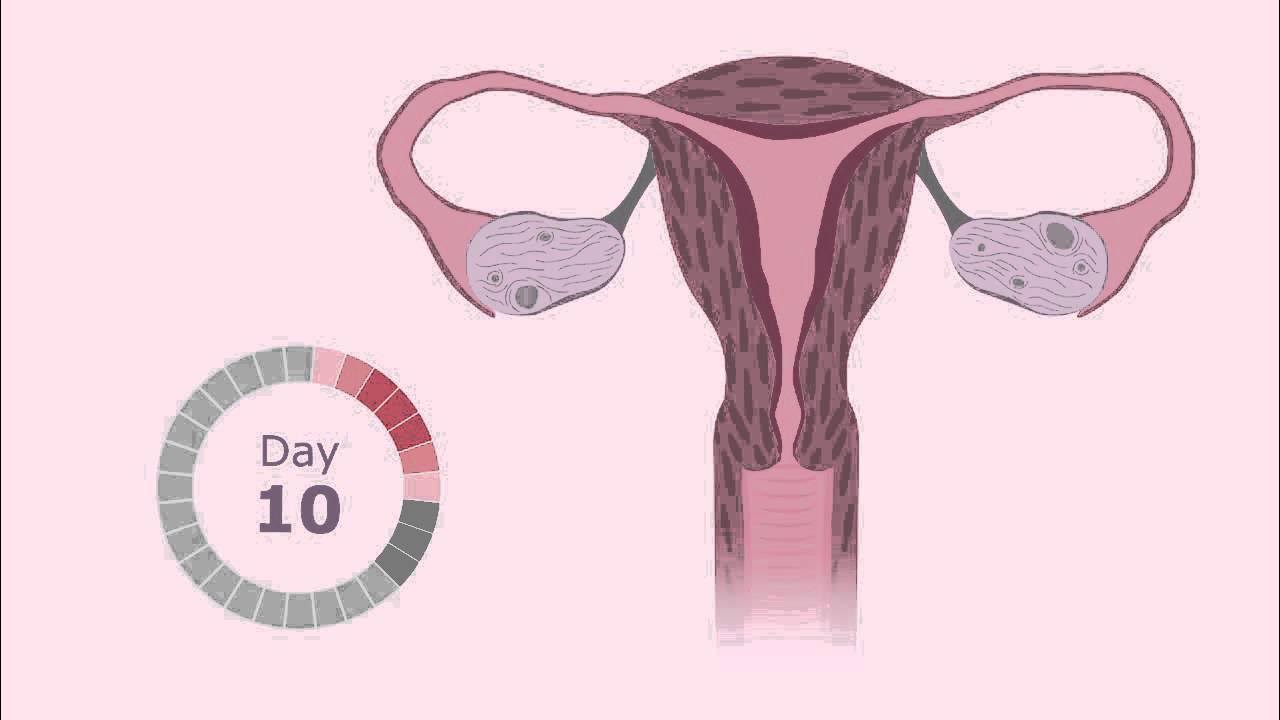Ovarian and Uterine Cycle (Menstrual Cycle)
Summary
TLDRThis script delves into the menstrual cycle's intricacies, highlighting the coordinated efforts of the ovaries and uterus to facilitate pregnancy. It explains the hormonal communication starting from the hypothalamus, through the pituitary gland, to the ovaries and uterus. The cycle's phases—follicular, ovulation, luteal for the ovaries; and menstrual, proliferative, secretory for the uterus—are detailed. The script clarifies how estrogen and progesterone regulate the uterine lining and prepare for potential pregnancy, concluding with the cycle's feedback mechanisms and the body's preparation for the next menstrual cycle.
Takeaways
- 🌟 The menstrual cycle involves a coordinated effort between the ovaries and uterus to facilitate pregnancy and support it if it occurs.
- 🧠 The cycle is regulated by the brain, specifically the hypothalamus, which controls the pituitary gland that, in turn, controls the ovaries and uterus.
- 🔁 Hormones act as chemical messengers that travel through the blood, directing the actions of various organs and tissues involved in the cycle.
- 📈 The hypothalamus releases gonadotropin-releasing hormone (GnRH), which stimulates the pituitary gland to release follicle-stimulating hormone (FSH) and luteinizing hormone (LH).
- 🌱 The follicular phase of the ovarian cycle is marked by the development of ovarian follicles and the release of estrogen, which prepares the uterus for potential pregnancy.
- 🥚 Ovulation is the release of an egg from the ovary, triggered by a surge in LH, and is a critical event in the menstrual cycle.
- 🌕 The luteal phase follows ovulation, during which the corpus luteum forms and releases progesterone, which further prepares the uterus for pregnancy.
- 🩸 The menstrual phase of the uterine cycle involves the shedding of the endometrial lining if pregnancy does not occur, marking the beginning of a new cycle.
- 🔄 A positive feedback loop involving estrogen and GnRH leads to the LH surge necessary for ovulation, while high levels of estrogen and progesterone during the luteal phase inhibit the hypothalamus and pituitary gland, ending the cycle.
- 🔄 The cycle is a dynamic process with hormones influencing each other and the organs involved, ensuring a continuous and regulated menstrual cycle.
Q & A
What is the primary goal of the menstrual cycle?
-The primary goal of the menstrual cycle is to create the opportunity for pregnancy to occur and to support that pregnancy if it happens.
Where do the ovarian and uterine cycles start?
-The ovarian and uterine cycles start in the brain, specifically in a region called the hypothalamus.
How does the hypothalamus communicate with the ovary and uterus?
-The hypothalamus releases gonadotropin-releasing hormone (GnRH), which stimulates the pituitary gland to release follicle-stimulating hormone (FSH) and luteinizing hormone (LH). These hormones travel to the ovary, which then controls the uterus through the release of estrogen and progesterone.
What are the three phases of the ovarian cycle?
-The ovarian cycle consists of three phases: the follicular phase, ovulation, and the luteal phase.
What triggers the start of the menstrual phase in the uterine cycle?
-The menstrual phase is triggered by a drop in progesterone, which occurs when the corpus luteum degenerates at the end of the ovarian cycle.
What is the role of estrogen during the follicular phase?
-During the follicular phase, estrogen is released by the developing follicles in the ovary. This hormone helps to regrow the uterine lining (stratum functionalis) during the proliferative phase of the uterine cycle.
What happens during ovulation?
-Ovulation occurs when the luteinizing hormone (LH) surge causes the egg to rupture from its follicle and be released from the ovary.
What is the function of progesterone in the luteal phase?
-Progesterone, released by the corpus luteum during the luteal phase, signals the uterus to secrete a nutrient-rich fluid to prepare for potential pregnancy.
How does the corpus luteum influence the menstrual cycle if no pregnancy occurs?
-If no pregnancy occurs, the corpus luteum degenerates, causing a drop in progesterone levels. This drop triggers the start of the menstrual phase, where the uterine lining is shed.
What is the role of feedback loops in the regulation of the menstrual cycle?
-Feedback loops involving estrogen and progesterone help regulate the menstrual cycle. Estrogen can both stimulate and inhibit the release of GnRH, FSH, and LH, depending on its levels. Progesterone, estrogen, and inhibin also work together to suppress further follicular development during the luteal phase.
Outlines

Этот раздел доступен только подписчикам платных тарифов. Пожалуйста, перейдите на платный тариф для доступа.
Перейти на платный тарифMindmap

Этот раздел доступен только подписчикам платных тарифов. Пожалуйста, перейдите на платный тариф для доступа.
Перейти на платный тарифKeywords

Этот раздел доступен только подписчикам платных тарифов. Пожалуйста, перейдите на платный тариф для доступа.
Перейти на платный тарифHighlights

Этот раздел доступен только подписчикам платных тарифов. Пожалуйста, перейдите на платный тариф для доступа.
Перейти на платный тарифTranscripts

Этот раздел доступен только подписчикам платных тарифов. Пожалуйста, перейдите на платный тариф для доступа.
Перейти на платный тарифПосмотреть больше похожих видео

Female reproductive system in Hindi | external genitalia Area | Internal genitalia area | Functions

Understanding The Female Reproductive System

The Menstrual Cycle

Ovulation & the Menstrual Cycle

Alat Reproduksi Wanita || Oogenesis || Siklus Menstruasi || Sistem Reproduksi Manusia

Sistem Reproduksi Wanita
5.0 / 5 (0 votes)
